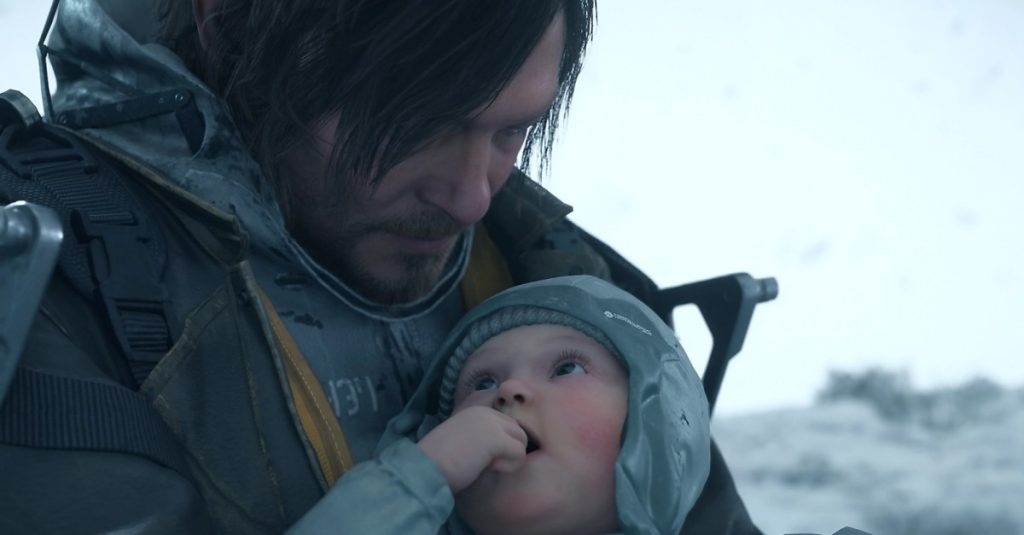Hideo Kojima, the visionary director known for his pioneering approaches to video game narratives, recently expressed his discontent over the overwhelmingly positive reception of his latest project, Death Stranding 2: On the Beach. As reported in an interview with Edge magazine, Kojima noted that the test scores for this sequel exceeded those of the original game, which had drawn a mixed reaction back in 2019. He stated, “Everyone seems to be positive,” revealing his desire for the game to be more divisive. This sentiment underscores Kojima’s complex relationship with public perception and his ambition to push artistic boundaries in gaming.
Kojima’s Artistic Philosophy
Kojima is known for his desire to evoke strong reactions from his audience, and this is evident in his previous work, including the original Death Stranding, which left many players baffled. The 2019 game, which featured a unique blend of exploration and social commentary, initially divided critics and players alike. With Death Stranding 2, despite the game receiving accolades from testers, it seems that Kojima fears the lack of controversy might dilute the impact of his storytelling. In a candid conversation with musician Woodkid, who contributed to the game’s soundtrack, Kojima remarked, “I want people to end up liking things they didn’t like when they first encountered it.” This philosophy of fostering appreciation through discomfort reflects Kojima’s ambition not only as a game designer but as a storyteller who aims to challenge norms.
The Evolution of Gameplay
Upon experiencing Death Stranding 2, early impressions suggest that the game is both a continuation and an evolution of its predecessor. Critics have noted that while it may have smoothed out some of the awkwardness that characterized the first installment, it still retains the hypnotic charm that captivated many. The game expands upon the open-world format, offering players a rich environment filled with treacherous landscapes and intricate storylines. As reported by Rolling Stone, even Kojima himself recognized the need for changes following the overwhelmingly positive feedback from initial testers, indicating an ongoing commitment to refining his craft.
A Reflection on Controversy and Reception
As Kojima navigates a world where both gamers and critics are more forgiving and open to unconventional gameplay narratives, the reception of Death Stranding 2 raises questions about the nature of art and its audience. The success of this sequel seems to line up with changing gaming trends, where players are increasingly valuing innovation and distinctiveness. The rise of games like Elden Ring and Baldur’s Gate 3 demonstrates a growing appetite for experiences that provoke thought and challenge players. This shift in tastes allows for a more welcoming environment for a game like Death Stranding 2, which, despite its unusual gameplay loop, has found a more receptive audience in the current landscape.
High Stakes in Narrative and Design
As the narrative progresses, players take on the role of Sam Bridges once again, now navigating additional regions, including Mexico and Australia, amid the surreal environments that define Kojima’s world. The storytelling remains character-driven, with a focus on emotional connections that resonate deeply with players. While combat mechanics have been refined for a less frustrating experience, the core challenge of traversing inhospitable terrain persists, requiring careful planning and strategic execution. Death Stranding 2 not only offers engaging gameplay but also weaves a story that is both expansive and introspective, prompting players to reflect on connection, isolation, and the human experience in a post-apocalyptic world.
Community and Market Reaction
The gaming community has responded well to Death Stranding 2, indicating that players are eager for the return to Kojima’s enigmatic and thought-provoking universe. As the game anticipates its release, it is essential to consider the profound impact it has on the industry’s narrative landscape. With over 3 million copies sold within weeks of its release, as reported by Statista, it is evident that Kojima’s work resonates with a significant portion of the gaming audience. The sequel’s ability to captivate both new players and veterans serves as a testament to its carefully crafted balance of familiarity and innovation.
Conclusion
In conclusion, Death Stranding 2: On the Beach represents a significant step forward for Kojima Productions, building on the foundations of the original game while embracing a more positive reception. As Kojima navigates the complexities of his legacy, he continues to challenge players to engage with gaming on a deeper level. By fostering a broader appreciation for complex narratives and unique gameplay experiences, Kojima underscores the value of video games not only as entertainment but also as a profound artistic medium.
Quick Reference Table
| Feature | Description |
|---|---|
| Director | Hideo Kojima |
| Release Date | Coming Soon |
| Setting | Post-Apocalyptic World |
| Main Character | Sam Bridges |
| Gameplay Style | Exploration and Narrative-Driven |
| Notable Mechanics | Strategic Cargo Management |

